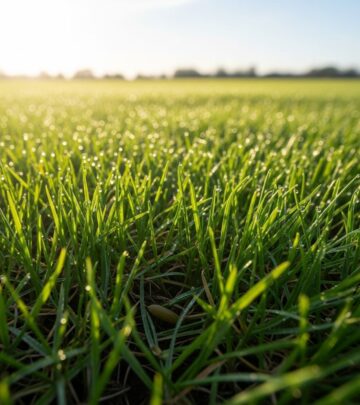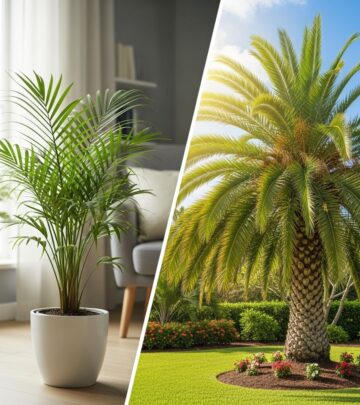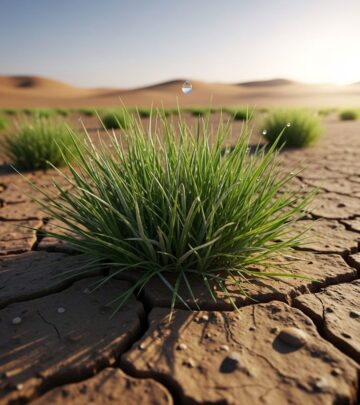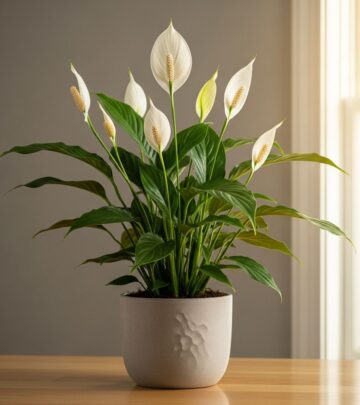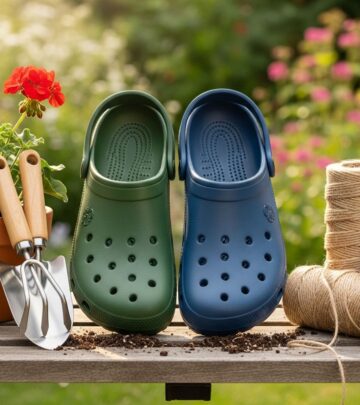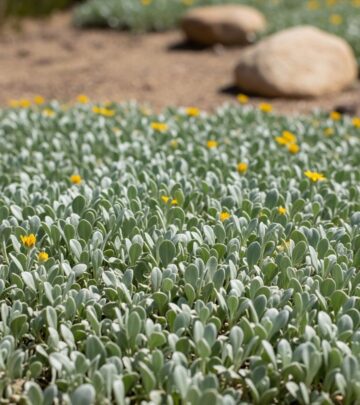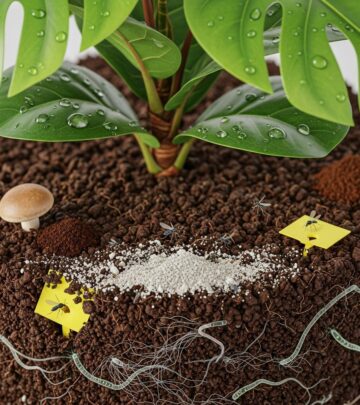How to Use Diatomaceous Earth in Your Garden: A Complete Guide
Ancient silica powder offers a chemical-free path to healthier, more resilient plants.

Image: HearthJunction Design Team
Diatomaceous earth (DE) is a versatile, naturally occurring substance that can revolutionize your garden care routine. Whether you’re aiming to eliminate stubborn pests or improve soil structure, this fine white powder—made from fossilized diatoms—offers a safe, eco-friendly, and effective solution. Explore what diatomaceous earth is, how it works, and the best practices for maximizing its benefits in your home garden.
What is Diatomaceous Earth?
Diatomaceous earth is made from fossilized aquatic organisms called diatoms, which settled in ancient lakes and oceans. Over thousands of years, these tiny organisms formed chalky sediment deposits, which are mined and processed into a fine, talc-like powder. DE is rich in silica and various trace minerals, making it uniquely suited for gardening applications.
There are two main types of diatomaceous earth:
- Food Grade: Safe for use in gardens and even around pets and humans (with precautions). It contains low levels of crystalline silica.
- Pool Grade: Used in pool filtration. Not safe for garden use due to its high crystalline silica content and different processing method.
How Diatomaceous Earth Works in the Garden
DE is a mechanical pesticide. Rather than relying on chemical compounds, its effectiveness comes from its microscopic, razor-sharp edges. When insects or pests crawl through the powder, these edges damage their waxy exoskeletons, causing them to dehydrate and die. This physical mode of action makes DE a valuable tool for organic gardeners looking to avoid synthetic pesticides.
Key Benefits of Diatomaceous Earth
- Non-Toxic Pest Control: DE targets crawling insects like aphids, slugs, mites, ants, flea beetles, and earwigs without introducing hazardous chemicals to your plants.
- Safe for People and Pets (when used responsibly): Food-grade DE poses minimal risk to humans and animals after dust has settled.
- Improves Soil Structure: DE’s porosity enhances soil aeration, retains nutrients, and improves drainage when mixed with potting soils.
- Reduces Need for Chemical Inputs: By using DE, you can minimize or eliminate the use of synthetic insecticides.
- Multi-purpose Helper: Effective for pest control, compost management, and as a soil conditioner.
Common Uses for Diatomaceous Earth in the Garden
Ready to incorporate DE into your garden? Below are the main tasks you can tackle with this natural powder:
- Controlling Insect Pests: Dust or sprinkle DE on the leaves and stems of infested plants. Especially effective against aphids, thrips, mites, mealybugs, ants, slugs, earwigs, and flea beetles.
- Protecting Your Compost: Sprinkle DE in compost piles or bins to reduce flies and maggots.
- Slug and Snail Barrier: Create a circle of DE around susceptible plants to deter slugs and snails.
- Indoor Plant Protection: Lightly dust houseplants experiencing infestations of spider mites, fungus gnats, or mealybugs.
- Improving Potting Mix: Mix DE into potting soil to improve drainage and airflow, supporting healthy root growth.
How to Apply Diatomaceous Earth: Step-by-Step Instructions
- Water First (for outdoor plants): Lightly water plants so DE will stick to their surfaces.
- Dust the Plants: Use a hand duster, soft brush, or shaker to evenly distribute DE on leaves (both tops and undersides), stems, and directly on soil around the plant base.
- Reapply After Rain/Irrigation: DE loses effectiveness when wet but regains its potency after drying. Reapply weekly or after heavy rain.
- Create Barriers: For crawling pests, create a thin barrier or ring of DE around the base of plants or garden beds.
- Mix Into Soil: For soil amendment, blend a handful of DE per gallon of potting mix to improve structure and drainage.
Application Tips
- Apply in the Morning: Early mornings minimize wind and maximize dew adherence, helping DE stick.
- Target Pest Hotspots: Focus on affected areas rather than blanketing the whole garden—DE is non-selective and can harm beneficial insects if overused.
- Avoid Flower Heads: To protect pollinators, avoid dusting open flowers where bees and butterflies visit.
- Wear Protection: Always use a dust mask or respirator and gloves to avoid inhaling fine particles.
When and Where to Use Diatomaceous Earth
DE is effective in multiple settings, both indoors and outdoors. Here are some ideal uses:
- Outdoor Gardens: For vegetables, fruits, ornamentals, and roses
- Indoor Plants: Houseplants, greenhouses, and conservatories
- Compost Areas: To reduce fly and maggot problems
- Pet Areas: Around pet bedding (with precaution) to control fleas and mites
Precautions and Safety When Using Diatomaceous Earth
- Use Food Grade: Only food-grade DE is safe for garden, household, and animal use.
- Avoid Inhalation: The fine dust can irritate your lungs and mucus membranes. Wear a mask and apply on calm days.
- Keep Away from Eyes: Protect your eyes during application.
- Protect Beneficial Insects: As DE works mechanically on all insects, limit its use to targeted applications to avoid harming bees and ladybugs.
- Store Properly: Keep DE in a dry, sealed container out of reach of children and pets.
Comparing Diatomaceous Earth to Other Pest Control Options
| Method | Mode of Action | Pros | Cons |
|---|---|---|---|
| Diatomaceous Earth | Mechanical (dehydration) | Non-toxic, effective, multi-use, safe with care | Needs reapplication after rain, non-selective |
| Chemical Pesticides | Chemical disruption | Fast-acting, broad spectrum | Potential toxicity, environmental harm, pest resistance |
| Neem Oil | Biochemical | Biodegradable, some selectivity, mild effect on beneficials | Needs frequent application, may not work on all pests |
Real-World Success Stories
Many gardeners and farmers have shared positive experiences with DE as both a pest solution and a soil enhancer. Its adoption across home gardens and organic farms continues to rise thanks to its affordability, safety, and multi-purpose value. The ongoing shift toward sustainable gardening practices suggests DE will remain a staple in eco-friendly horticulture.
Frequently Asked Questions (FAQs)
Q: Is diatomaceous earth safe for pets and children?
A: When using food-grade diatomaceous earth carefully and after dust has settled, it’s generally safe for pets and children. However, avoid inhalation by applying when they are not present and letting dust settle before allowing access.
Q: How long does DE remain effective after application?
A: DE will remain effective as long as it stays dry. After heavy rain or irrigation, reapply to maintain protective coverage.
Q: Can diatomaceous earth harm bees and other beneficial insects?
A: Yes. Because it’s a non-selective physical pesticide, DE can affect any insect that comes into contact with it. To protect pollinators, avoid applying on flowering plants or during peak pollinator activity.
Q: Can I use DE in my vegetable garden?
A: Absolutely! Food-grade DE is safe for vegetables, fruits, and edible plants, provided it is rinsed off thoroughly before harvest.
Q: How should I store diatomaceous earth?
A: Store in a cool, dry place in a tightly sealed container to maintain effectiveness and prevent clumping.
Final Thoughts
Diatomaceous earth is a time-tested, eco-friendly powerhouse for pest management and soil care in the modern garden. With a few safety precautions and proper application, you can harness its ancient mineral power for a more resilient and thriving garden. As sustainable practices gain momentum, DE stands out as a tool that’s both powerful and planet-friendly.
References
- https://seattleseed.com/blogs/news/benefits-of-using-diatomaceous-earth-in-the-organic-garden
- https://blog.epminerals.com/10-reasons-to-use-diatomaceous-earth-in-the-garden
- https://bokashiearthworks.net/the-secret-silica-the-revolutionary-impact-diatomaceous-earth-has-on-plant-health-and-protection/
- https://www.gardeningknowhow.com/plant-problems/pests/pesticides/diatomaceous-earth-insect-control.htm
- https://plants4presents.co.uk/plant-care/why-we-recommend-diatomaceous-earth-for-common-plant-pests
Read full bio of Shinta



